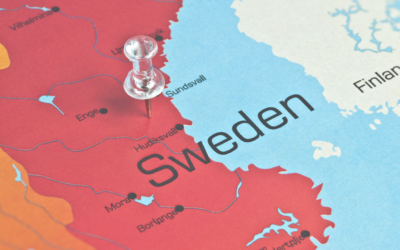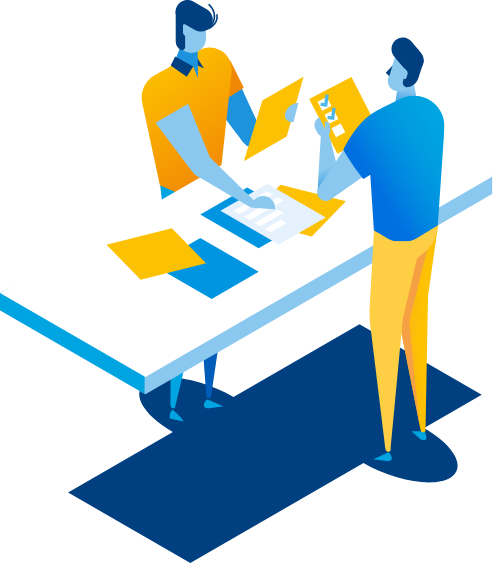The Internet of Things – helping to create equal opportunities
The Internet of Things is mostly associated with industrial applications – there we are dealing with the most spectacular implementations, that end up as case studies presented by the largest providers of the IoT infrastructure. However, that does not mean that the industrial business is monopolising the technology – quite the contrary, as, by means of a number of its characteristic features, the broadly perceived Internet of Things, additionally serves the purpose of overcoming challenges in developing countries, and often in regions that were previously digitally excluded.
For a moment, let us discard the advanced implementation in factories, or the multi-element household automation, provided by Silicon Valley giants, and let us turn attention to how the IoT allows to create equal opportunities. Not only in developing countries, but also in the streets of the cities of Europe, Asia, and both Americas. These and other scenarios are abundantly exploited worldwide, demonstrating how diverse the applications of IoT can be, significantly raising the quality of life and the security of tens of thousands of people. We are not talking about plans, perspectives, or forecasts, but about already functioning implementations.
Life-giving Internet of Things
Despite the fact, that it may be a hard pill to swallow for the broadly perceived West, we should realise, that the number of people, who have no continuous access to drinking water is estimated approximately at 1 billion. Another 2 billion people are persons who drink contaminated water every day. No wonder, that numerous organisations attempt to enhance this most rudimentary survival aspect, by means of the IoT. Moreover, one could transfer already established solutions, for example, those implemented in waste disposal or water intake. One of the most interesting initiatives of this type is realised by the scientists of the University of Oxford in collaboration with the authorities of the Kenya region of Kyuso.
A project has been realised there since 2013, due to which, water pumps had become an element of the IoT, being the main source of drinkable water in the region. By means of accelerometers installed in pumps and added connection modules, a system was launched, that would continuously monitor the efficiency of the pumps, and send information regarding the usage profile of the pump or its efficiency, to the central server, on a continual basis. Next, gathering the data from an increasing number of pumps in a particular period of time, models were developed, due to which an early warning system against pump malfunctions was launched. In result, the time required for pump repair was significantly decreased, and the average efficiency of the devices increased from 68% to 98%.
IoT is creating equal opportunities in cities
In order to observe the process of creating equal opportunities by means of the IoT, we do not have to look at the Sub-Saharan Africa – interesting implementations are proposed i.a. in various European cities, particularly those dedicated to people with disabilities. An example of Helsinki deserves attention, where Blindsquare software is being developed. With the use of the GPS modules and radiolocation devices, blind and visually impaired individuals gain the ability to freely navigate the city, due to dynamic audio-indicators. Similar solutions are implemented worldwide in various public utility buildings.
Often, the investments in innovations assume reaching out to persons that already have access to them. However, those excluded from the digital world are often forgotten, e.g. the elderly. Their needs are often omitted in appealing prospects regarding initiatives related to the realisation of the smart city concept, however, there are some noble exceptions. Amongst them, one should list the implementation from the city of Tilburg in Denmark. The elderly had received the Crosswalk application allowing them to gain additional time to cross a busy, multi-lane street, the crossing of which at a slower pace, would have to be divided into several phases.
How does Crosswalk work? The system is based on the interactions of sensors installed in traffic lights, and smart phones with the installed application. Due to the continuous scan of the surrounding in search of signal, it is possible to identify an elderly individual who intends to cross the street, and the readjustment the entire traffic light system, so that the pedestrian could have more time, and would not have to worry, or to take the road in phases. The city intends to expand the application further, and to upgrade it with functions that would respond to the needs of i.a. cyclists or blind persons.
Be vigilant
Numerous examples from the entire globe can be presented, however, we should mention also ineffective implementations. There is an abundance of ideas (and even actual implementations) that are absolute flops, seeming like scams, therefore, we should be vigilant in terms of IoT innovations. At the moment of the popularisation of the Internet of Things, there was no lack of initiatives, that were forcefully attempting to turn a particular solution into an „intelligent” one, mostly through the use of smartphone data for processing. In result, the evaluative medical tests were needlessly commissioned to smartphones (as a diode would suffice), and they would provide faulty results.
As shown, the Internet of Things finds incredibly broad application in raising the standard of life among people, who for some reason, have a limited access to resources that are generally available and vital. It may be drinking water, the need to navigate through an unknown city, or the simple need to cross the street. Minor, local implementations are of as much significance as enormous projects co-founded in cooperation with cities or universities. Moreover, the examples given, show how flexible the concept of connected devices, due to which creating equal opportunities with the Internet of Things is possible in every corner of the world.
Author:
Paweł Pietras
Global Partnership Manager




